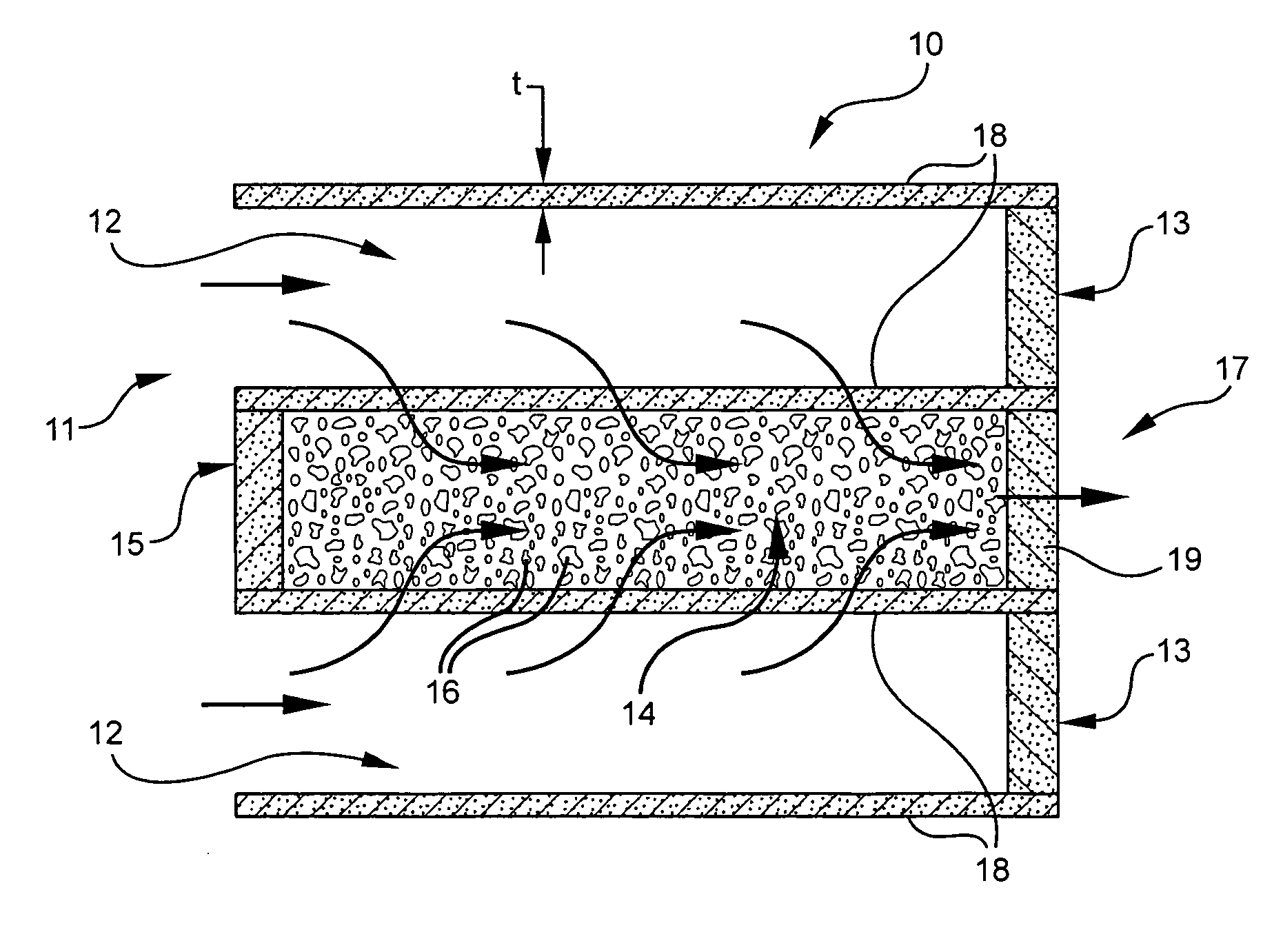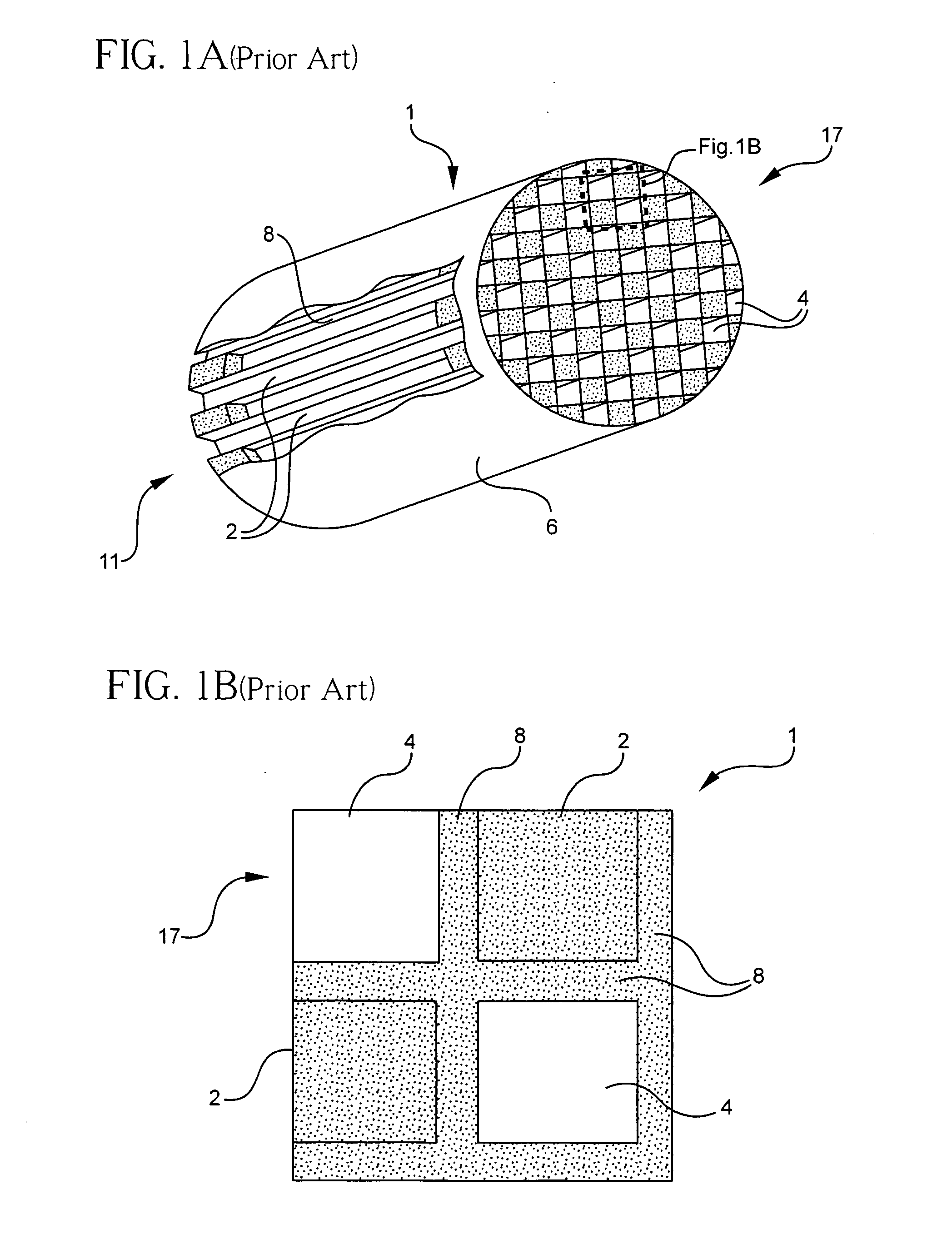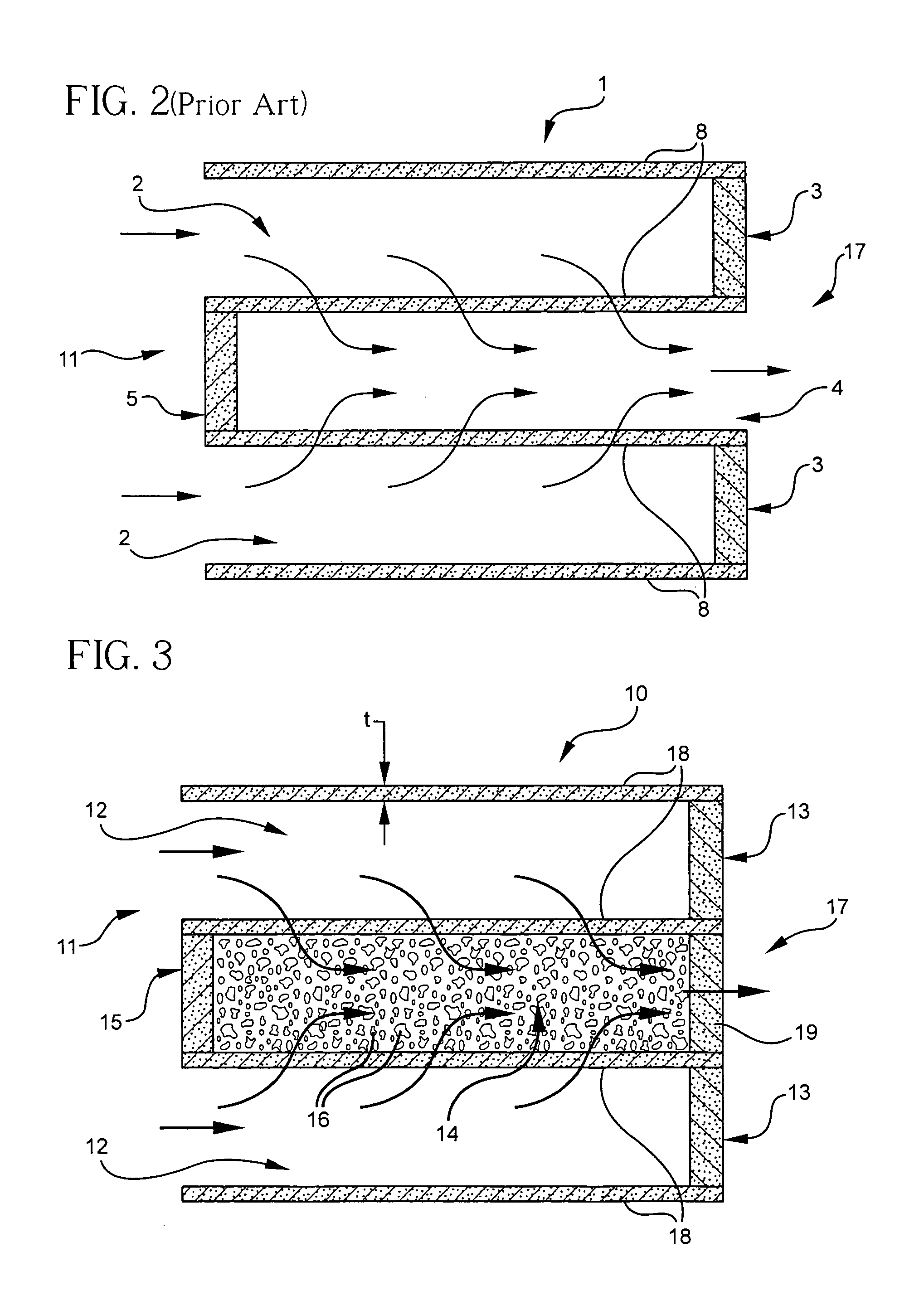[0010] In view of the foregoing, one
advantage of the present invention is that it may provide a ceramic wall-flow filter that has thinner
filtration walls as compared to the prior art so as to minimize the pressure drop across the filter. Another
advantage of the present invention is that it may provide a ceramic wall-flow filter that has high bulk heat capacity to minimize high temperatures and potential damage during regeneration processes. In particular, thin walls may be achieved while at the same time providing sufficiently high bulk heat capacity to minimize high temperatures and potential damage during regeneration.
[0011] These and other advantages are attained by a ceramic wall-flow filter having utility for filtering particulate matter from gases in accordance with the present invention. According to embodiments of the invention, the ceramic wall-flow filter includes a filter body having an array of porous ceramic walls defining a pattern of inlet and outlet cells traversing the body and extending between an inlet end and an outlet end, the inlet cells including first plugs at the outlet end, and the outlet cells including second plugs at the inlet end, and heat absorbing elements disposed within at least some of said outlet cells such that a bulk heat capacity of the elements in the outlet cells is greater than a bulk heat capacity of the elements in inlet cells, if any are provided in such inlet cells. Most preferably, heat absorbing elements are provided only in the outlet cells. The presence of the heat absorbing elements increases a bulk heat capacity of the filter without substantially interfering with a flow of gas through the porous ceramic walls. In particular, according to one
advantage, the wall thickness may be made smaller as compared to prior art structures while the addition of the elements maintains at least an equivalent level of bulk heat capacity. Optionally, of course, the wall thickness may be made the same with an increase in bulk heat capacity as compared to the prior art.
[0012] In accordance with one embodiment, the elements disposed within the cells are a porous
ceramic foam material. In this regard, the ceramic forming the foam may be the same ceramic material that forms the porous ceramic walls. The
ceramic foam may be applied, for example, to coat the inner surfaces of the outlet cells and / or to fill the interior of the outlet cells. Alternatively or additionally, the
ceramic foam may be applied to coat the inner surfaces of at least some of the inlet cells. However, if done, such
coating must be applied to a lesser extent than in the outlet cells thereby resulting in higher bulk heat capacity in the outlet cells than inlet cells while retaining suitable
soot and ash storage capacity. Most preferably, the permeability of the ceramic foam material is higher than the permeability of the ceramic material forming the walls, and may be implemented as a cellular structured foam, such as an
open cell foam. The foam may be attached to the inner surfaces of the
cell walls, for example, by fusion. Alternatively, the heat absorbing, gas conductive elements may comprise loose material and be unattached to the inner surfaces of the cells. Additional plugs may be employed to retain the loose material in the cells.
[0013] In still another embodiment, the heat absorbing elements disposed within at least some of the outlet cells may be implemented as webs of ceramic material. In this regard, the webs may be implemented to extend completely across the outlet cells, for example, or be integrally connected to the inner surface of the outlet
cell. The ceramic wall-flow filter may be implemented such that the interior of the outlet cells have a
square cross section, and the web connects across two corners of the interior in a
diagonal configuration. Alternatively, two webs may be connected across different opposing corners of the interior in an x-shaped configuration. In yet another embodiment, two webs may be implemented to connected opposing midpoints of the walls in a cross-shaped configuration. Alternatively, the thickness of the webs may be different from the thickness of the porous walls defining the inlet and outlet cells.
[0014] According to yet a further aspect of the invention, a method of manufacturing a ceramic wall flow filter is provided comprising the steps of forming ceramic material, preferably by
extrusion, into a filter body having an array of porous ceramic walls defining a pattern of inlet and outlet cells traversing the body and extending between an inlet end and an outlet end, plugging the inlet cells with first plugs at the outlet end, plugging the outlet cells with second plugs at the inlet end, and during the step of extruding or thereafter, forming heat absorbing elements within at least some of the outlet cells such that a bulk heat capacity of the outlet cells is greater than a bulk heat capacity of the inlet cells. Preferably, the heat absorbing elements are only formed in the outlet cells.
 Login to View More
Login to View More 


